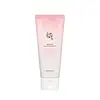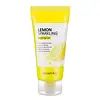What's inside
What's inside
 Key Ingredients
Key Ingredients

 Benefits
Benefits

 Concerns
Concerns

No concerns
 Ingredients Side-by-side
Ingredients Side-by-side

Water
Skin ConditioningPrunus Mume Flower Water
Skin ConditioningCellulose
AbsorbentMethylpropanediol
Solvent1,2-Hexanediol
Skin ConditioningCarbomer
Emulsion StabilisingArginine
MaskingEthylhexylglycerin
Skin ConditioningAllantoin
Skin ConditioningSorbitol
HumectantDisodium EDTA
Pyrus Malus Fruit Extract
Skin ConditioningCamellia Sinensis Leaf Extract
AntimicrobialHouttuynia Cordata Extract
Skin ConditioningNelumbo Nucifera Flower Extract
Skin ConditioningOryza Sativa Extract
AbsorbentPrunus Mume Fruit Extract
HumectantVaccinium Angustifolium Fruit Extract
Skin ProtectingButylene Glycol
HumectantWater, Prunus Mume Flower Water, Cellulose, Methylpropanediol, 1,2-Hexanediol, Carbomer, Arginine, Ethylhexylglycerin, Allantoin, Sorbitol, Disodium EDTA, Pyrus Malus Fruit Extract, Camellia Sinensis Leaf Extract, Houttuynia Cordata Extract, Nelumbo Nucifera Flower Extract, Oryza Sativa Extract, Prunus Mume Fruit Extract, Vaccinium Angustifolium Fruit Extract, Butylene Glycol
Water
Skin ConditioningCetrimonium Chloride
AntimicrobialCellulose
AbsorbentPropylene Glycol
HumectantZanthoxylum Piperitum Fruit Extract
Skin ConditioningPassiflora Edulis Flower Extract
Skin ConditioningUsnea Barbata Extract
Carbomer
Emulsion StabilisingPolysorbate 80
EmulsifyingCitrus Limon Fruit Water
MaskingCitrus Limon Fruit Extract
MaskingCamellia Sinensis Leaf Extract
AntimicrobialAlthaea Rosea Flower Extract
Skin ConditioningAloe Barbadensis Leaf Extract
EmollientHamamelis Virginiana Extract
AntiseborrhoeicCentella Asiatica Extract
CleansingCarica Papaya Fruit Extract
Skin ConditioningHydrolyzed Collagen
EmollientSodium Hyaluronate
HumectantOryza Sativa Extract
AbsorbentFucus Vesiculosus Extract
EmollientBrassica Oleracea Italica Extract
AstringentPortulaca Pilosa Extract
Skin ConditioningJuniperus Oxycedrus Wood Extract
PerfumingCeramide AP
Skin Conditioning1,2-Hexanediol
Skin ConditioningDisodium EDTA
Parfum
MaskingWater, Cetrimonium Chloride, Cellulose, Propylene Glycol, Zanthoxylum Piperitum Fruit Extract, Passiflora Edulis Flower Extract, Usnea Barbata Extract, Carbomer, Polysorbate 80, Citrus Limon Fruit Water, Citrus Limon Fruit Extract, Camellia Sinensis Leaf Extract, Althaea Rosea Flower Extract, Aloe Barbadensis Leaf Extract, Hamamelis Virginiana Extract, Centella Asiatica Extract, Carica Papaya Fruit Extract, Hydrolyzed Collagen, Sodium Hyaluronate, Oryza Sativa Extract, Fucus Vesiculosus Extract, Brassica Oleracea Italica Extract, Portulaca Pilosa Extract, Juniperus Oxycedrus Wood Extract, Ceramide AP, 1,2-Hexanediol, Disodium EDTA, Parfum
 Reviews
Reviews

Ingredients Explained
These ingredients are found in both products.
Ingredients higher up in an ingredient list are typically present in a larger amount.
1,2-Hexanediol is a synthetic liquid and another multi-functional powerhouse.
It is a:
- Humectant, drawing moisture into the skin
- Emollient, helping to soften skin
- Solvent, dispersing and stabilizing formulas
- Preservative booster, enhancing the antimicrobial activity of other preservatives
Camellia Sinensis Leaf Extract is derived from the leaves of the tea plant. Black tea, green tea, and oolong tea are all harvested from this plant.
This ingredient has many skin benefits:
This ingredient contains polyphenols, a strong antioxidant. Antioxidants help fight off molecules that damage skin cells.
On top of that, the antioxidants in green tea neutralize free-radicals from the sun. This gives the skin some extra UV protection, but should not replace sunscreen.
Many components of tea have anti-inflammatory properties.
Polyphenols and L-theanine help soothe the skin and reduce irritation. The caffeine in Camellia Sinensis Leaf Extract helps calm inflamed blood vessels.
Other compounds found in tea include: Vitamin Bs, linoleic acid, magnesium, calcium, iron, and zinc.
Research has shown both drinking Camellia Sinensis Leaf Tea and applying it to the skin can help boost skin elasticity and hydration. Studies also show using tea extract may reduce sebum, or oil, production.
Learn more about Camellia Sinensis Leaf ExtractCarbomer is a polymer of acrylic acid. Its main role is to create a gel consistency.
A high amount of carbomer can cause pilling or balling up of products. Don't worry, most products contain 1% or less of carbomer.
Cellulose is the main component of plant cell walls. It is used as an emulsifier, absorbent, and texture enhancer.
This ingredient has many functions:
Fun fact: Cellulose is the most abundant form of organic polymer on Earth.
Learn more about CelluloseDisodium EDTA plays a role in making products more stable by aiding other preservatives.
It is a chelating agent, meaning it neutralizes metal ions that may be found in a product.
Disodium EDTA is a salt of edetic acid and is found to be safe in cosmetic ingredients.
Learn more about Disodium EDTAOryza Sativa Extract comes from the rice grain, Oryza sativa. Rice extract has wound healing, antioxidant, anti-inflammatory, and hydrating properties.
Rice grains contain numerous antioxidants which may help with anti-aging, such as vitamin E. Antioxidants help stabilize free-radical molecules. Unstable free-radical molecules may damage your skin cells and accelerate signs of aging.
A study from 2002 found rice to help increase the rate of wound healing. The same study found an improvement of skin barrier function in the patients after taking rice baths.
Numerous in-vitro studies have found rice water to help decrease sun damage by increasing collagen production and inhibiting the process of tyrosinase.
Long story short- tyrosinase is an enzyme that controls melanin production. Our bodies start producing melanin (AKA tanning) when exposed to UV radiation to protect against damage. Rice water is found to partially block this process.
Though more research is needed on rice's ability to help with UV protection, recent studies seem promising.
Wondering why rice is hydrating? The protein in rice have emollient properties. Emollients create a barrier on the skin to trap moisture in, keeping your skin moisturized.
Some rice extract may have mildly-exfoliating properties. These are mainly limited to Oryza Sativa (Rice) Bran and Oryza Sativa (Rice) Germ Powder.
This rice was first cultivated in China over 10,000 years ago. Many cultures throughout Asia have used rice water on skin and hair for centuries.
Learn more about Oryza Sativa ExtractWater. It's the most common cosmetic ingredient of all. You'll usually see it at the top of ingredient lists, meaning that it makes up the largest part of the product.
So why is it so popular? Water most often acts as a solvent - this means that it helps dissolve other ingredients into the formulation.
You'll also recognize water as that liquid we all need to stay alive. If you see this, drink a glass of water. Stay hydrated!
Learn more about Water